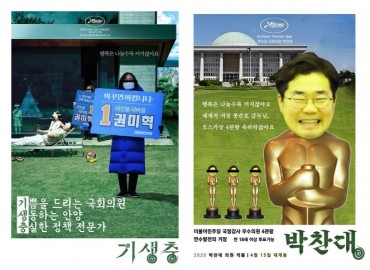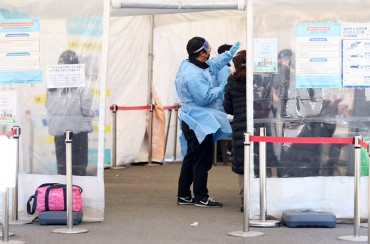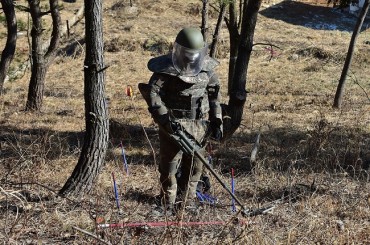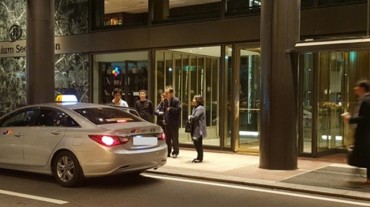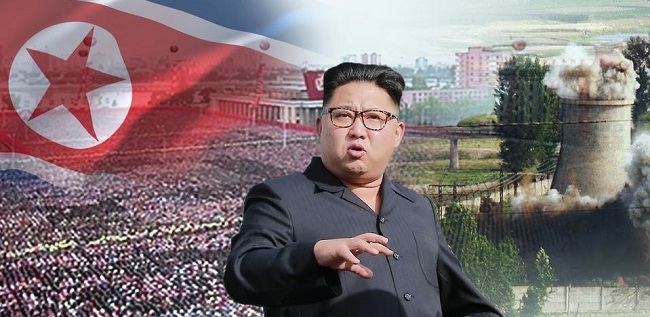
Facing a bellicose northern neighbor that fires missiles, tests nukes and habitually threatens a war of annihilation, South Korea may look like a dangerous flashpoint to the eyes of outsiders. (Image: Yonhap)
SEOUL, Aug. 31 (Korea Bizwire) — Facing a bellicose northern neighbor that fires missiles, tests nukes and habitually threatens a war of annihilation, South Korea may look like a dangerous flashpoint to the eyes of outsiders.
But the country has been inured, or resigned, to the perennial threats from North Korea for decades. So small wonder that South Korean citizens — and foreigners staying for a long time alike — remained calm and unperturbed by one of its most menacing missile provocations Tuesday.
“Well, I am not rattled or frightened as these provocations are nothing new. … This security crisis on the divided peninsula has been lingering for decades,” Park Min-sik, a 41-year-old office worker in Seoul, told Yonhap News Agency.
“The missile launch would have gotten on my nerves, if the security conditions had been stable and peaceful before that,” he added.
On Tuesday, Pyongyang launched an intermediate-range ballistic missile over Japan into the northern Pacific, fueling talk of a possible second Korean War, which some fear could involve a nuclear exchange.
The latest provocation dampened the cautious optimism for dialogue between Washington and Pyongyang, both of which appeared poised to dial down tensions following an exchange of fiery rhetoric.
Earlier this month, U.S. President Donald Trump issued a strong warning against the North’s provocations, saying his military establishment is “locked and loaded.” It followed his threat of “fire and fury” on Pyongyang.
The North also threatened to fire four ballistic missiles toward the U.S. territory of Guam. But Kim put the threat on hold later, saying he would watch the U.S. behavior a “little more.”
The war of words, however, does not seem to have disturbed the business-as-usual mood in Korea.
“Candidly speaking, I am not worried, as I believe the verbal threats or limited provocations are highly unlikely to lead to any serious armed clash here,” said Kim Jang-won, a 38-year-old high school teacher.
“I think that in many cases they make the threats for domestic political purposes. … We have seen this political maneuvering by politicians even in our own country, and I have grown fatigued, so to speak, or accustomed to it,” he added.
Many believe the North’s young dynastic ruler Kim Jong-un is seeking to strengthen internal unity and consolidate power through provocations and menacing rhetoric, and tout his brave leadership enough to take on the world’s greatest power, the U.S.
A hard-line stance is also useful to divert the North’s citizens’ attention away from their threadbare economy that has shown no signs of improving amid tough international sanctions for Pyongyang’s missile and nuclear programs, observers noted.
Won Kyu-wang, a 49-year-old office worker in Goyang, west of Seoul, said that he is not worried because the North’s provocations appear to ultimately target the U.S., not the South, and mostly aim to raise the stakes in future nuclear negotiations with the U.S.
“I am not disturbed by the North’s saber-rattling based on my logic that Pyongyang’s threats target Washington with the view to sign a mutual nonaggression pact or gaining some concessions,” he said.
“Given the increasing frequency and intensity of the provocations, some may be concerned, but I have this feeling that the North would not make any extreme sort of choice to trigger a war on the peninsula,” he added.
Constant North Korean provocations do not seriously disturb Seoul-based foreigners like Matthew Crawford either.
“My coping mechanism is the same as most locals, I think, which is to block out the situation and try not to think about it too much,” said Crawford, a 37-year-old Canadian editor who has lived in Seoul on and off since 2003.
“Part of this has to do with fatigue from constant exposure to news reports about North Korean provocations. After a while these become like background noise.”
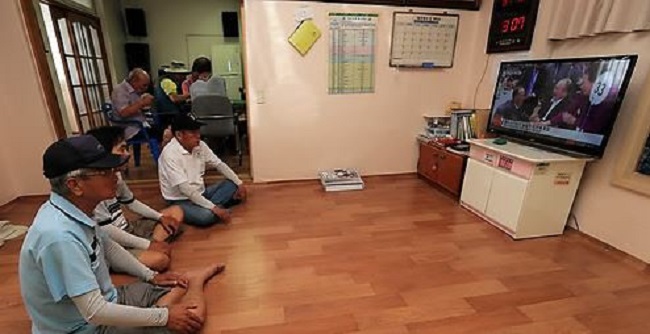
“Part of this has to do with fatigue from constant exposure to news reports about North Korean provocations. After a while these become like background noise.” (Image: Yonhap)
Crawford added that most of his family members in Canada and the U.S. are not overly concerned about his safety.
“I think this is because they’ve visited South Korea themselves and have seen that ordinary South Koreans aren’t affected by the North Korea situation — or don’t let themselves be affected,” he said.
But not all are unruffled, especially with the North’s fast advancing weapons capabilities in the hands of the unpredictable, inexperienced young leader.
Lee Jung-hyun, a 41-year-old citizen in Seoul, was worried about the safety of his family that he began some preparations to get out of harm’s way in the event of a contingency here.
After April when cross-border tensions escalated, with the North rumored to be preparing for provocations during major political events, Lee first searched the Internet to find ways to escape from Seoul, purchased emergency food and checked evacuation routes in his apartment.
“I think it is a problem that some Koreans remain insensitive to their security situation,” he said. “We have to make preparations against disasters or possible war in advance.”
(Yonhap)



